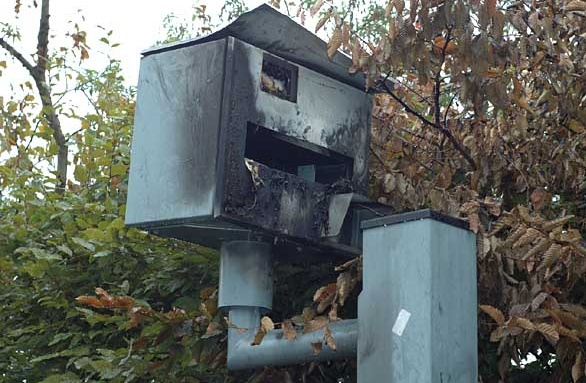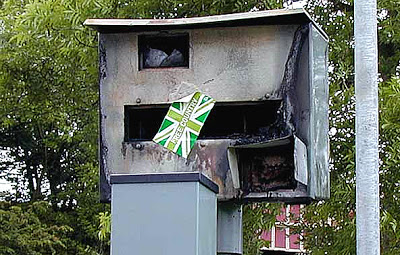As y’all may have gathered from my earlier post about needing a vacuum cleaner, I’ll be moving into my own place soon, leaving Doc Russia to get his house back at last.
A couple of thoughts: Doc had originally offered to put me up for a year, and subtracting the time I spent over in Britishland, France and South Africa on my sabbatical last year, that year is up (plus a month or so because it took me longer than I expected to find a suitable place to live). Needless to say, my gratitude for his generosity is beyond words — as I’ve said several times before, that generosity (coupled with the same from Mr. Free Market and The Englishman in Britishland) quite literally saved me, giving me time to relax, recover and rebuild my life after becoming a widower. No more need be said on that topic, because I’ve said it all before and anyway it just embarrasses them.
So: where to live?
Fortunately, I’d done a lot of earlier research after I sold the old house last year, and I’d at least eliminated the places that were totally unacceptable.
The biggest decision, about location, was the hardest. Of course, I’d want to stay in Plano (because I love the place, and it’s close to 2/3 of my kids); but where in Plano? The options:
- an “urban” location — e.g. in one of the three “town centers” that Plano offers (Old Town, Legacy West or Shops At Legacy): small, quite expensive, likely to be noisy, but handy and not requiring me to get in the car if I needed a pint of milk, plus having restaurants on tap within walking distance — all the pros and cons of the urban lifestyle
- a more “suburban” type of complex: quieter, larger, more affordable, but more remote.
When I started looking at places, though, the situation became much clearer. Frankly, the urban apartments, while all attractive from a location perspective, were either too small (500 sq.ft), too expensive, or a little run-down (Old Town especially). I liked the convenience, didn’t mind the noise, but ultimately I realized that I would need more space — and most importantly, none of them offered an attached garage: parking garage or street parking only. What I learned about that type of apartment served to crystallize my thinking on what I really needed, as opposed to what I thought I wanted.
My criteria for a Plano apartment, then, became quite simple:
- Affordable (duh)
- Ground floor. After busting one of my already-fragile knees in the Scottish Highlands last year, I’m done with stairs — there’s a sound reason why I have a CLP (Cripple’s License Plate) on the Tiguan
- 1-bedroom with attached garage (so I can let the storage unit go, and have somewhere to store my tools)
- Large-ish (more than 750 sq.ft), to hold my still-massive book collection, my artwork, the Chubb which holds the ahem few guns I still possess, and Ye Olde Ammoe Locquer
- Decently-finished (no crappy carpets, worn-out kitchen cabinets, etc.)
- Gated. I keep strange hours because of my part-time gig with Uber, and need to know the place is more or less secure whilst I’m gone; also, if I ever travel back to Euroland, I need to be able to “lock and leave” with some degree of confidence that I won’t come back to an empty box
- In a decent neighborhood, and with residents who drive late-model cars and don’t keep junkers up on blocks (if you get my drift)
- Within reasonable walking distance from at least a few shops, restaurants and such so I can get some exercise, at least.
I narrowed the choices to half a dozen “suburban” complexes, but three of them were really suburban, being miles away from any kind of shop, supermarket, drugstore, restaurants, whatever — and they were all expensive, too.
In the end, I found what I was looking for, and it satisfied every single one of the criteria listed above. In fact, the place is perfect save for two ugh! features: it has an electric stove top, not gas; and the cable/Internet provider is… AT&T*. [pause to allow the moaning and groaning to subside]
But those two problems aside, the apartment has mostly wood floors with carpet only in the bedroom, a separate dining room, a small study and a massive garage — almost one-and-a-half-car size — with lots of storage inside the apartment itself.
And cheap (for Plano).
I’ll be moving in around the middle of July. In the meantime, I have to earn Uber-$$ [sic] so I can afford to get the necessaries, e.g. some furniture, a washer and dryer (no laundromats for Kim oh no) and so on. Also, as The Spoiled & Ungrateful Children made off with all the kitchen goods, I’ll be needing to build that particular workshop from the ground up. Fortunately, I know quite a bit about the latter, having worked in the Housewares department in a large retail chain, so that won’t be as difficult as some of the other areas. (By the way: since when did halfway-decent kitchen cutlery become so damn expensive? Granted, it’s been about thirty years since I last bought the damn things, but still.)
So, if you’ll excuse me, I’m off to the range pick up some passengers…
*I’ve had dealings with AT&T before, and they are the most dishonest bastards I’ve ever come across. Even their connection speed leaves room for dishonesty: “up to 50Mbps” — so they could deliver as little as 5Mbps and still be “technically” within their promise.







